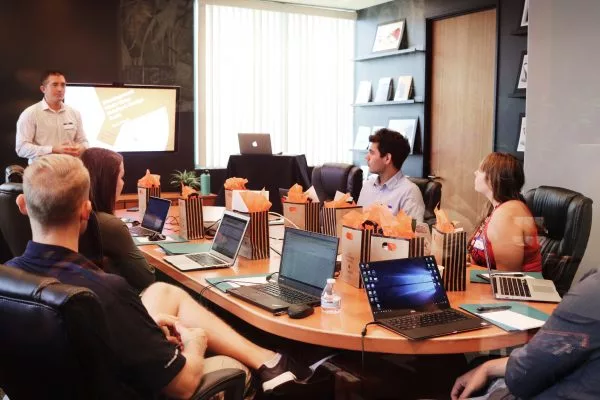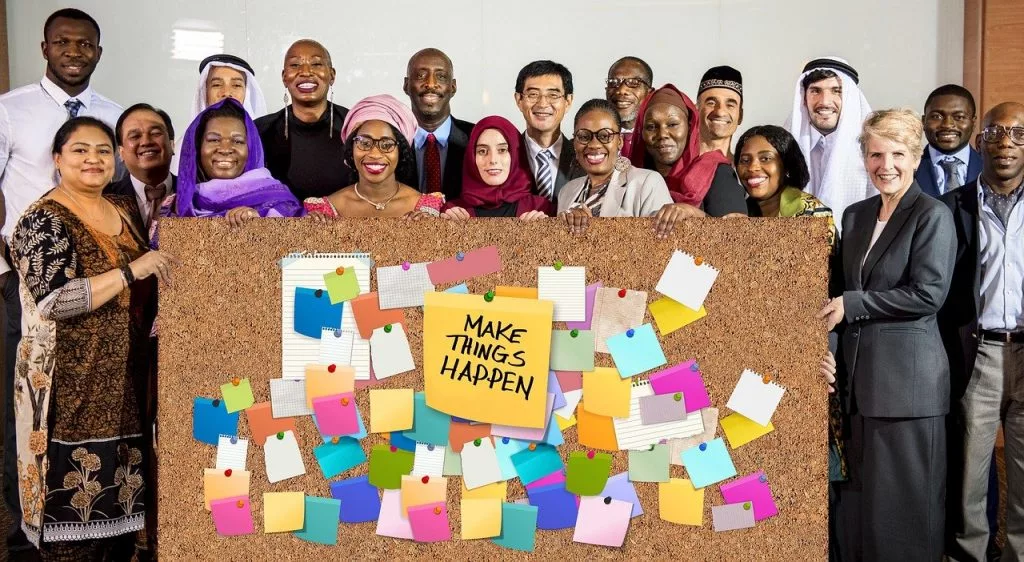
Nonprofit board members manage various responsibilities, including setting standards, governing, and fundraising for your organization. Now more than ever, nonprofit boards need to ensure they can continue funding the causes they care so much about with strong fundraising practices.
Supporting, educating, and engaging your nonprofit board is vital to optimize efforts and drive fundraising success. So, if you want to learn how to achieve this and everything else involved in creating an effective fundraising board, keep reading.

Table of Contents
- Why Do Nonprofits Need Fundraising Boards?
- What Do Nonprofit Fundraising Boards Do?
- What Shouldn’t Nonprofits Use their Fundraising Board for?
- How to Create an Effective Fundraising Board
- Strategies for Board Fundraising Success
- How to Engage Board Members in Fundraising
- Conclusions on Board of Directors Fundraising
Why Do Nonprofits Need Fundraising Boards?
Nonprofit boards are an integral part of the charity and nonprofit sectors. They provide oversight, guidance, and leadership to their organizations. A successful board can help a nonprofit meet its goals and grow in ways that it may not have been able to on its own. The Board of Directors help determine the direction the organization will take, how it will grow, and who could be potential partners in achieving these goals. But what exactly should a nonprofit use its fundraising board for?
What Do Nonprofit Fundraising Boards Do?

Nonprofit fundraising boards are an important part of the success and growth of a nonprofit. Take a look at a few of the keyboard fundraising responsibilities that can benefit your nonprofit, and just as importantly, make a note of what you shouldn’t be asking them to do.
There are more effective uses for your fundraising board than just asking for donations. Use your nonprofit’s skills, life experience, and knowledge wisely to secure fundraising success. There are many different ways that a nonprofit can use its fundraising board productively, including but not limited to the following:
- Creating a goal together – Brainstorm fundraising ideas and devise a plan of action.
- Designing a budget for the organization’s goals. Discuss how much money should be spent on advertising, direct mailings, tech support, etc.
- Coming up with matching gift challenges to increase giving potential and impact
- Setting up community events and serving as volunteer ambassadors.
- Sharing updates about the organization and spreading awareness about your cause.
- Securing funding and partnerships with influential sponsors.
- Creating alliances with committed community leaders of local and global communities who open doors.
- Building relationships with diverse private and public institutions important to nonprofits.
- Overseeing and cooperating with legal and ethical standards and norms.
- Launching their own fundraising efforts, such as a peer-to-peer campaign or event.
What Shouldn’t Nonprofits Use their Fundraising Board for?

There are some things nonprofits should not use their fundraising board for, or it may negatively affect the organization.
Make sure not to:
- Ask them continuously to volunteer – be sensitive as many have full-time careers outside your nonprofit.
- Use them to raise money for other organizations.
- Be too pushy. Some board members are uncomfortable with fundraising. Help them by exploring more creative ideas to fundraise and making them feel more confident about raising money.
How to Create an Effective Fundraising Board
The effectiveness of a fundraising board can either make or break an organization. Raising money for nonprofits can be difficult, so it’s essential to create a solid board that will achieve the results your nonprofit needs.
Here are some pointers to get you started:
- Make sure prospective board members are fully informed of your fundraising expectations. Be transparent and detailed about board fundraising responsibilities and what exactly will be asked of them. You don’t want them to feel like they’ve been tricked into something later.
- When looking for potential board candidates, look at people from different industries and backgrounds.
- Recognize the importance of having a diverse group on the board. Remember inclusivity, equality, and diversity in race, age, abilities, and gender.
- Look for board members from outside the organization to provide unbiased oversight.
- Gather at least three people on your board of directors for a quorum (majority). This is a very small group; ideally, a non-profit board of directors will have at least 7-9 members.
- Bring on board members who are well connected, so they have access to networks and resources that may not otherwise be accessible.

Strategies for Board Fundraising Success
Now that you’ve assembled a solid fundraising board, what do they need from you to fundraise more effectively on behalf of your organization?
Be Clear from the Start
Nobody likes the feeling of being lured into something under false pretenses.

To avoid this, make sure to:
- Be clear with your board members from the start about their fundraising roles, responsibilities and expectations.
- Spell out what you need from them during the hiring process and listen to their feedback on what they want to bring to the table.
- Make sure all board members have an annual fundraising plan. This needs to clearly outline budget goals and the plan of action, so everyone is on the same page and can work together strategically.
- Review and evaluate fundraising campaigns together in order to celebrate achievements and see what needs to be improved on.
Educate

The more the board knows about your nonprofit, the more effectively they can work.
To achieve this, make sure to:
- Teach them the inner workings of your organization to get them more familiar with your nonprofit.
- Pass on helpful resources (blogs, articles, videos), share fundraising letter templates, and organize training workshops and 1-to-1 coaching sessions to build their confidence.
- Explain the importance of data reports, analytics and CRM and provide training when appropriate.
- Train them how to master the fundraising ask with useful role-play sessions and make them better fundraisers.
Support Board Members
Give your fundraising board the tools and support they need to work confidently and productively.
To pull this off, make sure to:

- Be supportive and empathic with your board members – this may be new to some of them and quite daunting.
- Choose a variety of fundraising options that appeal to various personality types and play to each person’s strengths.
- Make sure to show appreciation for even the smallest achievements at the beginning to build their confidence in their new fundraising role.
- Be available for feedback and updates (either online or in-person) to check how they’re getting on.
Let’s face it, you can’t please everyone all the time. However, by nurturing a supportive and friendly partnership between board members, staff, and volunteers, your nonprofit has the potential to run smoothly and successfully.
Meet Regularly

There are lots of different factors that go into deciding how often your board should meet. The frequency will depend on what type of organization you have, what stage it’s in, and your board’s fundraising expectations. Some organizations might only meet once or twice a year for organizational purposes, while others may require monthly meetings as they’re always working on something new. Deciding which frequency works best for your organization to optimize fundraising success is important.
The nice thing is that nonprofit boards and committees can now easily meet remotely via Zoom.
How to Engage Board Members in Fundraising
Engaging board members in fundraising can be tricky. It’s important to find the right balance between being too pushy and not doing enough. The problem is that many board members don’t know how to engage with donors in a way that will get them excited about giving more money or volunteering their time. So, how can your nonprofit make your fundraising efforts more successful and engaging for the board?

Let’s explore a few different ways board members can be more invested in the fundraising process.
- Listen to your board members – Validate their concerns and opinions. If they feel heard, they are more likely to want to get involved in fundraising efforts.
- Foster a culture of giving and volunteerism at your company – this will encourage them to join in and contribute.
- Create an environment where board members feel valued and appreciated – maybe consider the occasional thank-you gift and incentives for nonprofit board members.
- Involve them in all aspects of fundraising – Board members should be given the opportunity to vote on which fundraiser they would like to support so they are more invested in it.
- Get them on board early in the fundraising process – this way, they’ll feel more involved in the success of your campaign.
- Remind them why they joined your nonprofit board by introducing them to the community and individuals that your organization is helping. Show them firsthand the impact that you’ve made and how you plan to expand on those fundraising efforts to better lives and the community.
Don’t forget that it’s crucial to build strong and lasting relationships with your fundraising board members by:
- Gathering information about their interests and hobbies
- Inviting them to events that align with their interests
- Offering incentives for donations
The work of the fundraising board doesn’t end when they’ve raised enough money. In fact, they’re just getting started. Along with the nonprofit executive team, they still need to make sure the money raised makes the impact it was intended for. It’s also essential that they keep the money coming in after the fundraising campaign.
Conclusions on Board of Directors Fundraising
It’s important to understand what your nonprofit board needs to be successful. Paint a clear picture of where they are going and how they plan to get there. Have regular discussions about their goals and expectations so everyone knows what’s required of them. Also, not all board members feel at ease with asking for donations. When this happens, try to be supportive, offer insight, and encourage them in their fundraising efforts. Ultimately a happy, confident fundraising board will bring more success to your nonprofit.



![How to Start A Nonprofit 501(c)3 Org. [10 Step Guide] How to Start A Nonprofit 501(c)3 Org. [10 Step Guide]](https://www.dojiggy.com/files/sites/164/2019/03/starting-a-nonprofit-501c3-the-official-10-step-guide-1-423x282.webp)
